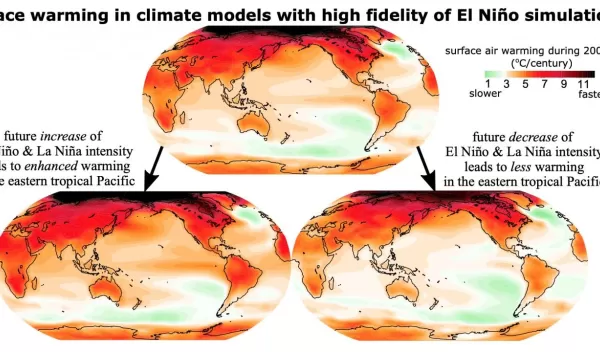
Reliability of El Niño simulation matters for predicting future climate
A new U.S. National Science Foundation-funded study led by University of Hawaii at Mānoa researchers, published in the journal Nature Communications, has revealed that correctly simulating ocean current variations hundreds of feet below the ocean surface -- the so-called Pacific Equatorial Undercurrent -- during El Niño events is key to reducing the uncertainty of predictions of future warming in the eastern tropical Pacific.
Trade winds and temperatures in the tropical Pacific Ocean experience large changes from year to year as the El Niño-Southern Oscillation affects weather patterns across the globe.
If the tropical Pacific is warmer and trade winds are weaker than usual -- an El Niño event --flooding in California typically occurs and monsoon failures in India and East Asia are detrimental to local rice production.
In contrast, during a La Niña event, global weather patterns reverse, with cooler temperatures and stronger trade winds in the tropical Pacific. These natural climate swings affect ecosystems, fisheries and agriculture.
Many climate models simulate El Niño and La Niña events of similar intensity. In nature, however, the warming associated with El Niño events tends to be stronger than the cooling associated with La Niña. In most models, El Niño and La Niña are symmetric, but they are asymmetric in nature.
In the new study, the scientists analyzed observational data and numerous climate model simulations and found that when the models simulate subsurface ocean current variations more accurately, the simulated asymmetry between El Niño and La Niña increases, becoming more like what is seen in nature.
"These results highlight the potentially important role of a subsurface ocean current in controlling El Niño-Southern Ocean asymmetry and how its effects, when properly addressed in models, may reduce climate projection uncertainties," says Varavut Limpasuvan, a program director in NSF's Division of Atmospheric and Geospace Sciences.


